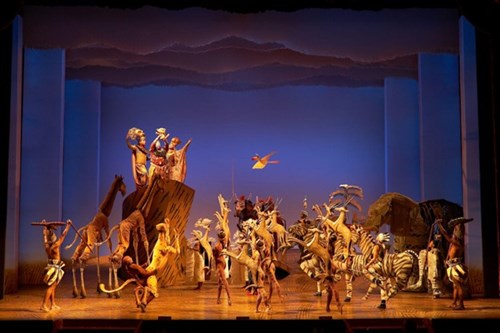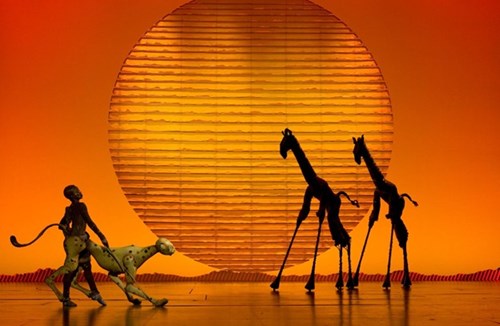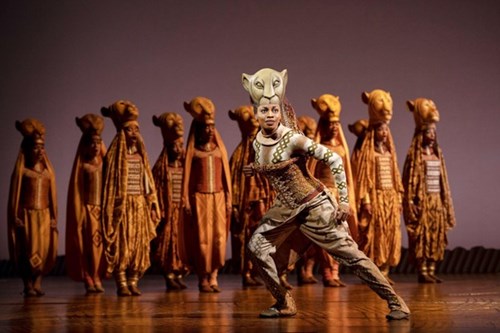
From its first roar on Broadway in 1997, Disney's The Lion King has been a resounding success. With over 25 global productions, the musical has been seen by more than 100 million people worldwide and has grossed an astronomical $8.1 billion in revenue, making it the highest-grossing Broadway show of all time. Beyond these staggering figures, The Lion King has left an indelible mark on the hearts of its audience with its rich storytelling, beloved characters, and groundbreaking stagecraft. The musical's resonating popularity can largely be attributed to its innovative use of puppetry, which brought the African savanna and its inhabitants to life on stage.
The Lion King is a show that has transcended the traditional boundaries of theatre - it is more than just a musical: it is a creative masterpiece that goes beyond traditional theater, combining elements of dance, costume, and puppetry to tell its timeless story. One of the most distinctive aspects of this show is its use of puppetry. The puppetry in The Lion King is not merely a design element, but a pivotal part of the narrative and character development. It is an integral part of the show's identity, contributing significantly to its artistic beauty, emotional depth and overall theatrical experience.
The Lion King's director, Julie Taymor, embraced the art of puppetry, recognizing its powerful potential to enhance storytelling. In her vision, puppetry became an essential tool for character representation, embodying the spirit and persona of the characters. With each puppet intricately designed and manipulated, the line between actor and puppet becomes beautifully blurred, creating a unique blend of realism and fantasy.
Puppetry in The Lion King serves as a crucial narrative device, enabling the storytellers to effectively convey the tale's grandeur and depth. The puppets become extensions of the actors, allowing them to portray their characters' emotions and personalities in a visually compelling way. They enable the transformation of human actors into a variety of animal characters, from the regal Mufasa and his menacing brother Scar, to the comical duo Timon and Pumbaa.
The Lion King, a story set in the heart of Africa's animal kingdom, is a tale of love, betrayal, and the journey to rightful leadership. Its origins trace back to 1994 when Disney released the animated film that quickly became a beloved classic. The story follows the young lion prince Simba, who is destined to succeed his father Mufasa as king. But when Mufasa is murdered by his power-hungry brother Scar, Simba is led to believe he is responsible for his father's death and runs away. Simba's journey to reclaim his throne and honor his father's legacy is a compelling narrative filled with unforgettable characters and life lessons.
Adapting this animated classic into a Broadway musical was a challenge that called for a creative vision that could capture the film's magic and present it in a live theatrical setting. Enter Julie Taymor, a remarkable director known for her innovative approach to theatre. Taymor rose to the challenge, utilizing an array of theatrical techniques, including puppetry, masks, and shadow puppetry, to bring the story to life on stage. Her vision transformed The Lion King into a theatrical experience unlike anything Broadway had ever seen before, making it a monumental success.
Puppetry has been an integral part of theatre since ancient times, with its roots tracing back to ancient Greek theatre. Over the centuries, puppetry has evolved, adapting to the changing tastes and technologies of the times. Broadway, known for its creative and innovative productions, has warmly embraced puppetry, integrating it into various shows to enhance the storytelling experience.

Broadway has seen an array of puppetry forms, from traditional hand puppets and marionettes to intricate, life-sized creations. Shows like Avenue Q and War Horse have made significant use of puppetry, each in unique ways. Avenue Q used puppetry to bring to life its humorous and satirical script, while War Horse employed life-sized horse puppets to tell a heart-wrenching story of love and war.
In The Lion King, puppetry is not just an artistic choice; it's a storytelling necessity. The musical relies heavily on puppetry to bring the African savanna and its wildlife to life in a way that costumes alone could not. The puppets, each exquisitely designed and manipulated, enable the human actors to transform into a myriad of animal characters, making the audience suspend disbelief and dive into the world of Simba and his journey.
The Lion King's stagecraft is a masterful blend of puppetry, mask work, and costume design. The show features a variety of puppet styles, including rod puppets, full-sized body puppets, and shadow puppets, each meticulously designed and brought to life on stage.
One of the most innovative techniques used in the show is the 'double event,' where the audience sees both the actor and the puppet. This technique, created by Taymor, encourages the audience to engage their imagination, blurring the line between the actor and the puppet. It adds a complex layer to the performance, enabling a deeper connection between the characters and the audience.
Masks also play a significant role in the show, particularly in representing Mufasa and Scar. The masks, worn above the actors’ heads, are manipulated to reveal different emotions, adding to the depth of the characters.
The show beautifully blends traditional African art forms with contemporary theatre techniques. The costume designs draw heavily from African art, while the puppetry and mask work combine traditional and contemporary techniques. The result, is a production with the textures and colors of the real world, that somehow still captures the spirit of the original animation.
The costumes play a pivotal role in the show, helping to bring the puppets to life. They serve as a bridge between the human actors and their animal characters, enhancing the believability of the transformation. Designed by Julie Taymor, they are not just visually stunning, but functional, designed to allow the actors to manipulate the puppets effectively.
The design process for the costumes was intricate and detailed, with inspirations drawn from various sources. Taymor studied the movements and features of the animals she was portraying, incorporating those details into the costume designs. She also drew inspiration from traditional African art and clothing, ensuring authenticity in her designs.
With so much hard work going on backstage, it’s not surprising that acting in The Lion King also requires a unique set of skills. In addition to singing, dancing, and acting, performers must also master the art of puppetry. This unique blend of skills demands an exceptional level of physical and mental dexterity, as actors must simultaneously animate their puppet, deliver their lines, and perform physically demanding choreography.

The innovative use of puppetry in The Lion King has played a significant role in the show's longevity and global success. The puppets have not just brought the African savanna to life on stage, but have also created a unique theatrical language that transcends cultural and language barriers. The visual storytelling, made possible by the puppets, allows the show to connect with audiences around the world, contributing to its universal appeal and enduring success.
Reflecting on The Lion King, it is clear that puppetry is not just a feature of the show; it is the heart and soul of its stagecraft. The puppets bring the majestic animals of the African savanna to life, creating a magical world where the boundaries between human and animal, reality and fantasy, are beautifully blurred. Every movement, every gesture of the puppets, mirrors the emotions and personalities of the characters, making the storytelling more engaging and emotionally resonant.
The magic of this show lies in its unique blend of puppetry, costume design, and human performance. It showcases the endless possibilities of theatre, proving that with creativity and innovation, the stage can become a canvas for the most extraordinary visions. This show is more than a spectacle; it's a testament to the power of imagination and the artistry of puppetry.

